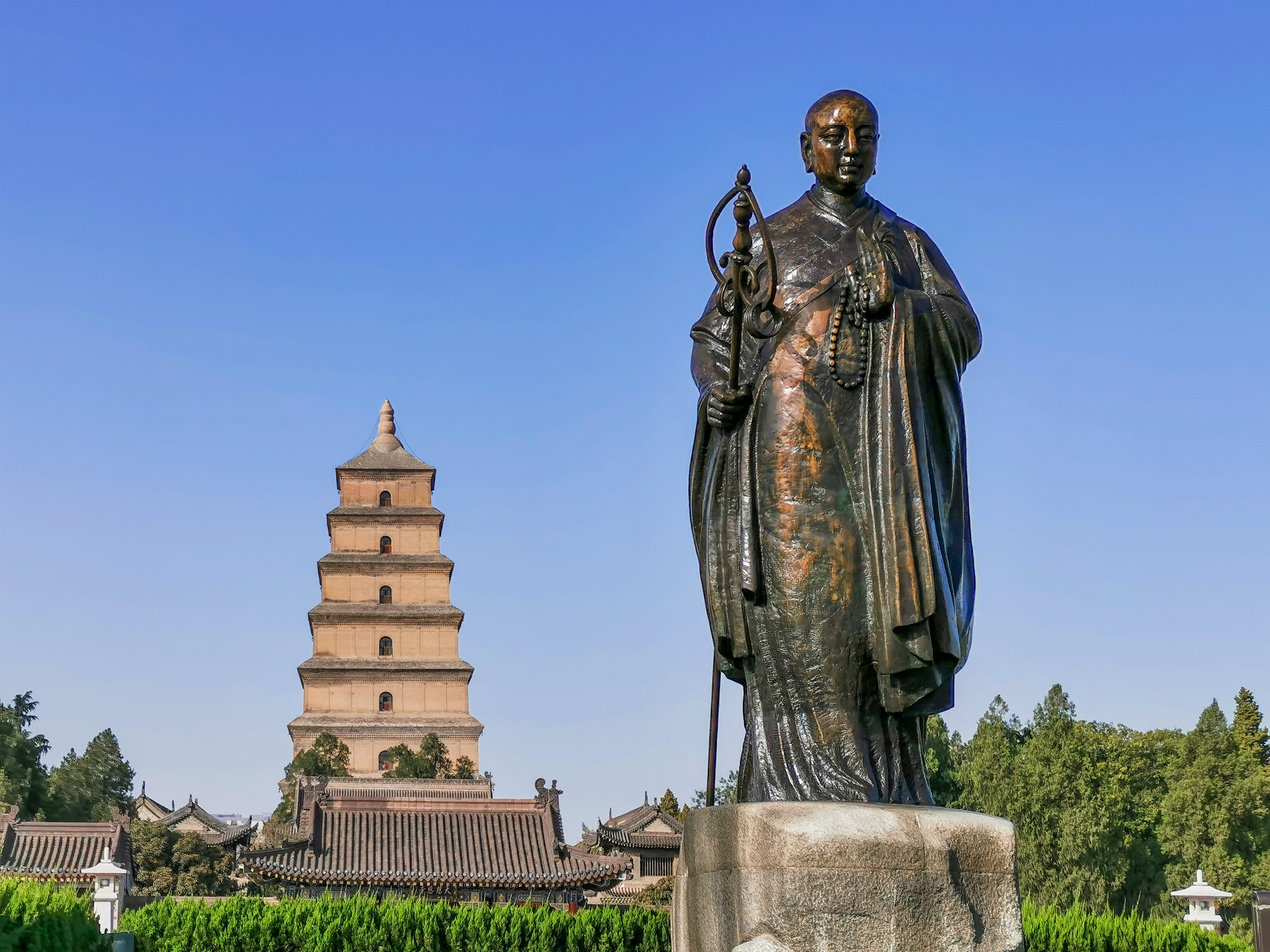Xuanzang (602?-664) was a Chinese Buddhist monk and explorer. Xuanzang traveled by foot and horse from China to India to collect Buddhist scriptures and learn more about Buddhism from other scholars. His name is sometimes spelled Hsüan–tsang.

Chen Hui was born around 602, near Luoyang in the province of Henan. He was raised in the Confucian tradition but converted to Buddhism as a child. Chen was ordained in 622 and was given the monastic name Xuanzang. As a young monk, Xuanzang was troubled by the limited selection and poor quality of Buddhist texts available in China. He resolved to travel to India to bring back more texts.
Xuanzang set off sometime between 627 and 629 from the Chinese capital of Chang’an (now Xi’an). The newly established Tang dynasty had greatly restricted emigration (travel out of the country) at the time. Xuanzang was denied permission to leave China, but he did so anyway, traveling in secret and at night while crossing the border.
Xuanzang soon became lost and wandered for several days in the Gobi Desert until he found his way. He traveled north of the Taklimakan Desert in what is now western China, passing through such oasis towns as Kucha and Turfan (also spelled Turpan). He crossed the Tian Shan mountains and visited Samarqand (also spelled Samarkand) and Tashkent, in present-day Uzbekistan. Xuanzang then turned south and crossed what is now northern Afghanistan and the Hindu Kush mountains to arrive in Gandhara, in what is now Pakistan.
Xuanzang visited many Buddhist monasteries and holy places in the Gandhara region. He then continued through the Kashmir region and the foothills of the Himalaya mountains to Mathura, India, near Delhi. Xuanzang followed the Ganges River east, visiting holy places associated with the life of Buddha. He spent several years at the famous monastic university of Nalanda, in what is now the northeastern Indian state of Bihar.
Xuanzang began his return journey to China in 643 with the help of the Indian emperor Harsha. He arrived back in Chang’an in 645, 16 years or more after leaving China. Word of Xuanzang’s great scholarship and impending return reached the capital before he did. Xuanzang was given a hero’s welcome, despite having left Tang China illegally. He returned with more than 650 Buddhist manuscripts, having traveled more than 10,000 miles (16,000 kilometers).
At the behest of Tang Emperor Taizong, Xuanzang wrote a book called Datang Xiyu Ji (The Great Tang Dynasty Record of the Western Regions) about his journey. It is one of the most important travel books ever written. In addition, one of Taizong’s disciples wrote a biography of Taizong that provides more details of his trip. Xuanzang spent the rest of his life translating the manuscripts he had collected from Sanskrit, an Indian language, into Chinese. The next emperor, Gaozong, built the Big Wild Goose Pagoda to house Xuanzang’s manuscripts.
Xuanzang died in 664. The Big Wild Goose Pagoda still stands as a Buddhist holy site and monument to Xuanzang. A famous Chinese novel from the 1500’s— The Journey to the West—was based on Xuanzang’s life.
